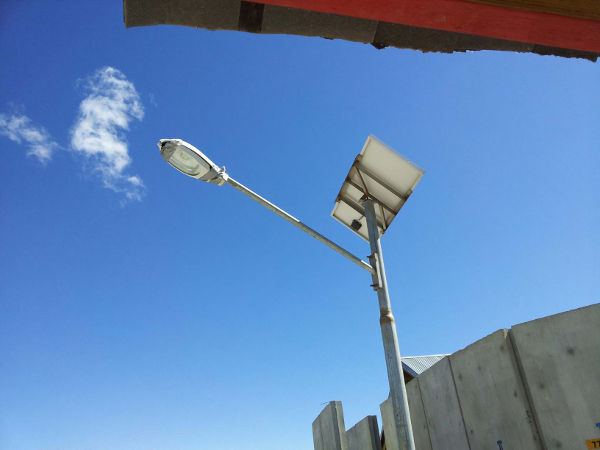Under project Roshni, the Indian Army’s Bhaderwah-based counter-insurgency unit Rashtriya Rifles has installed solar lights in poor and remote villages of Thanhala and Ganori-Kahara located in Jammu and Kashmir’s Doda district.
About 17,000 solar lights have been distributed so far by the Rashtriya Rifles in the villages of the district. Army’s initial aim was to light up 5,000 homes and Dhoks or mud houses, according to PTI.
The Army further plans to help more such remote villages. “Once identified, the Army would install 20 to 30 solar lamps in each village,” officials from the unit were quoted as saying by PTI.
The Army told PTI that the initiative was launched after it was felt that electricity was the most critical requirement in far-flung areas during interactions with people, including the floating population of nomadic Gujjar and Bakherwal communities.
Off-grid solar solutions come as a boon to people in the far-flung areas of the country, especially in the inhospitable terrains of Jammu and Kashmir where grid connectivity is a problem.
Realizing this, in December 2018, the Ministry of New and Renewable Energy (MNRE) received approval to launch phase II of Atal Jyoti Yojna (AJAY) during the financial year 2018-19 and 2019-20. The ministry has also received ₹500 million (~$7.13 million) to meet the pending liabilities of phase I of the program. Under the phase II of AJAY, 304,500 solar street lights are expected to be installed in Uttar Pradesh, Bihar, Jharkhand, Odisha, Assam, Jammu and Kashmir, Himachal Pradesh, Uttarakhand, North Eastern states including Sikkim, Andaman & Nicobar, Lakshadweep, and parliamentary constituencies covering 48 aspirational districts. The estimated cost per light is ₹25, 000 (~$356) and the MNRE will provide ₹5.71 billion (~$81.41 million), which is 75 percent of the total cost of solar street lights to be installed in phase II. The remaining 25 percent will come from Members of Parliament Local Area Development Scheme (MPLADS) fund of respective constituencies. The Energy Efficiency Services Limited (EESL) is the implementing agency for phase II of the AJAY program.
In June 2018, the Union Cabinet approved phase three of the Off-grid and Decentralized Solar PV Application Program. Under the program, a total of 3,00,000 solar street lights would be installed across the country and areas devoid of grid connectivity with no facility of street lighting solution would get precedence over other areas. The program also aims to distribute 25,00,000 solar study lamps in northeastern states and left-wing extremism affected districts.
Of late, the establishments owned or controlled by the Indian defense organizations and departments have been increasingly turning to solar PV technology to cut down power costs.
According to Q3 2018 Mercom India Solar Quarterly Market Update, there is a pipeline of approximately 100 MW of solar projects under the National Solar Mission Defense Program.
Although the center launched the Pradhan Mantri Sahaj Bijli Har Ghar Yojana in September 2017, there are more than a dozen unelectrified villages to date in Kahara, Dessa and Kastigarh Tehsils of Doda district.
In January 2019, Leh and Kargil, two of India’s most challenging and inhospitable terrains, have finally been connected to the national electricity grid. This feat, achieved after 72 years of independence, was made possible by the government’s PowerGrid Corporation of India Limited (PGCIL), a state-run transmission utility.
Source:MercomIndia
Image Courtesy:AmarUjala
You may also like
-
Trade Connect E-platform For Exports Is Single Window, Fast, Accessible And Transformational: Shri Piyush Goyal
-
Dot Simplifies Approval Processes For Telecom Licenses And Wireless Equipment
-
Coal Production and Supply Trends on Positive Trajectory
-
Union Minister To Release Booklets On Promotion Of Indigenous Species & Conservation Of States Fishes
-
2nd India-Japan Finance Dialogue held in Tokyo on 6th September, 2024
